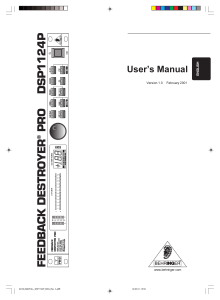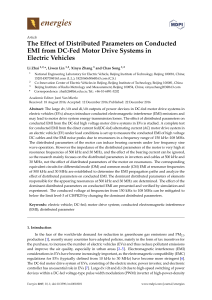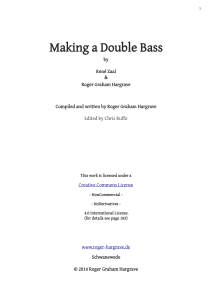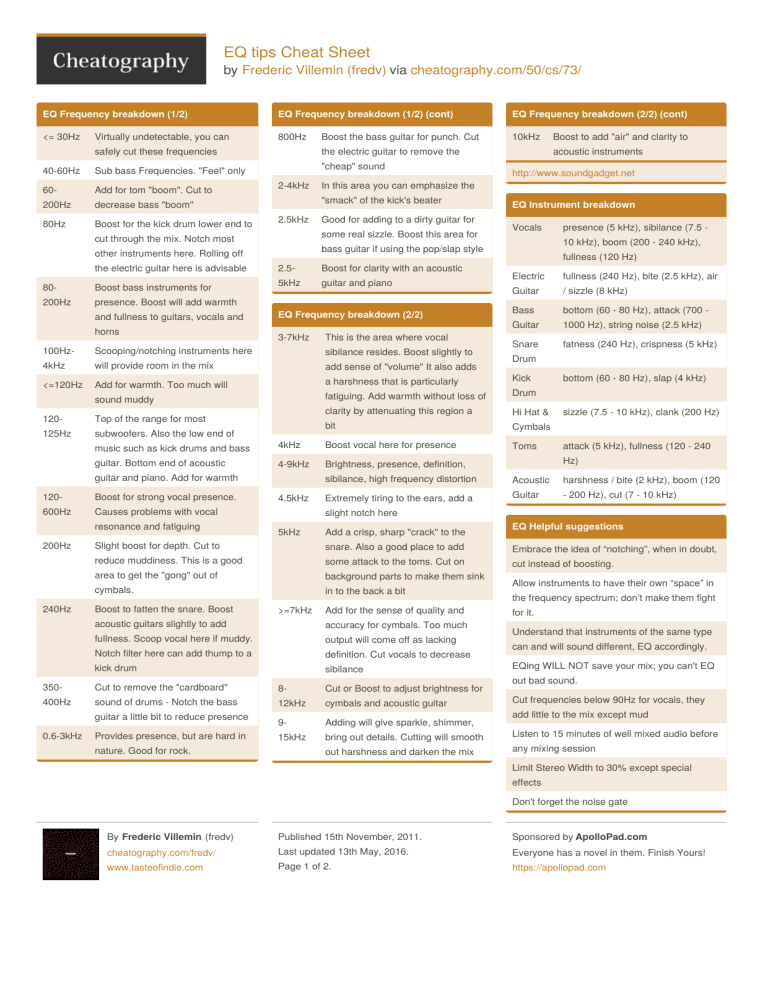
EQ tips Cheat Sheet by Frederic Villemin (fredv) via cheatography.com/50/cs/73/ EQ Frequency breakdown (1/2) EQ Frequency breakdown (1/2) (cont) EQ Frequency breakdown (2/2) (cont) <= 30Hz 800Hz 10kHz Virtually undetectable, you can Boost the bass guitar for punch. Cut safely cut these frequencies the electric guitar to remove the 40-60Hz Sub bass Frequencies. "Feel" only "cheap" sound 60- Add for tom "boom". Cut to 200Hz decrease bass "boom" 80Hz Boost for the kick drum lower end to 2-4kHz "smack" of the kick's beater 2.5kHz Boost bass instruments for 200Hz presence. Boost will add warmth and fullness to guitars, vocals and horns 2.5- Boost for clarity with an acoustic 5kHz guitar and piano EQ Frequency breakdown (2/2) 3-7kHz This is the area where vocal 100Hz- Scooping/notching instruments here sibilance resides. Boost slightly to 4kHz will provide room in the mix add sense of "volume" It also adds <=120Hz Add for warmth. Too much will a harshness that is particularly Vocals fullness (120 Hz) Electric fullness (240 Hz), bite (2.5 kHz), air Guitar / sizzle (8 kHz) Bass bottom (60 ‐ 80 Hz), attack (700 ‐ Guitar 1000 Hz), string noise (2.5 kHz) Snare fatness (240 Hz), crispness (5 kHz) Drum Kick Hi Hat & bit Cymbals music such as kick drums and bass 4kHz Boost vocal here for presence Toms guitar. Bottom end of acoustic 4-9kHz Brightness, presence, definition, 125Hz subwoofers. Also the low end of guitar and piano. Add for warmth 120- Boost for strong vocal presence. 600Hz Causes problems with vocal resonance and fatiguing 4.5kHz Hz) harshness / bite (2 kHz), boom (120 Extremely tiring to the ears, add a ‐ 200 Hz), cut (7 ‐ 10 kHz) slight notch here 5kHz Add a crisp, sharp "crack" to the some attack to the toms. Cut on area to get the "gong" out of background parts to make them sink cymbals. in to the back a bit >=7kHz Add for the sense of quality and acoustic guitars slightly to add accuracy for cymbals. Too much fullness. Scoop vocal here if muddy. output will come off as lacking Notch filter here can add thump to a definition. Cut vocals to decrease kick drum sibilance 350- Cut to remove the "cardboard" 8- Cut or Boost to adjust brightness for 400Hz sound of drums - Notch the bass 12kHz cymbals and acoustic guitar 9- Adding will give sparkle, shimmer, 15kHz bring out details. Cutting will smooth nature. Good for rock. attack (5 kHz), fullness (120 ‐ 240 Guitar snare. Also a good place to add Provides presence, but are hard in sizzle (7.5 ‐ 10 kHz), clank (200 Hz) Acoustic reduce muddiness. This is a good guitar a little bit to reduce presence bottom (60 ‐ 80 Hz), slap (4 kHz) sibilance, high frequency distortion Slight boost for depth. Cut to Boost to fatten the snare. Boost presence (5 kHz), sibilance (7.5 ‐ 10 kHz), boom (200 ‐ 240 kHz), clarity by attenuating this region a Top of the range for most 0.6-3kHz EQ Instrument breakdown fatiguing. Add warmth without loss of 120- 240Hz http://www.soundgadget.net Drum sound muddy 200Hz acoustic instruments bass guitar if using the pop/slap style other instruments here. Rolling off 80‐ Good for adding to a dirty guitar for some real sizzle. Boost this area for cut through the mix. Notch most the electric guitar here is advisable In this area you can emphasize the Boost to add "air" and clarity to out harshness and darken the mix EQ Helpful suggestions Embrace the idea of “notching”, when in doubt, cut instead of boosting. Allow instruments to have their own “space” in the frequency spectrum; don’t make them fight for it. Understand that instruments of the same type can and will sound different, EQ accordingly. EQing WILL NOT save your mix; you can't EQ out bad sound. Cut frequencies below 90Hz for vocals, they add little to the mix except mud Listen to 15 minutes of well mixed audio before any mixing session Limit Stereo Width to 30% except special effects Don't forget the noise gate By Frederic Villemin (fredv) Published 15th November, 2011. Sponsored by ApolloPad.com cheatography.com/fredv/ Last updated 13th May, 2016. Everyone has a novel in them. Finish Yours! www.tasteofindie.com Page 1 of 2. https://apollopad.com EQ tips Cheat Sheet by Frederic Villemin (fredv) via cheatography.com/50/cs/73/ EQ Helpful suggestions (cont) The old RIAA AES mechanical rule for vinyl was to cut at 47Hz and 12k, and some great recordings were made this way. Human perception at extreme highs and lows is not all that accurate or sensitive, and a little goes a long way EQ Glossary Attenuatio the reduction of a signal level n Band range of frequencies Boost selected frequency levels are amplified Cut selected frequency are attenuated Presence increasing causes the sounds of voices and such instruments seem more "present" Q describes the shape of the EQ curve (higher Q = narrower range, lower Q = wider range) Sibilance refers to the hissing "s","sh","z", or "zh", sound of the human voice Warmth sound where the bass and low mid frequencies have depth and where the high frequencies are smooth sounding opposed to aggressive or fatiguing Thanks to Tikmerd http://www.homerecording.be/forum/t11664.htm As well as dB Masters @ http://www.homerecordingconnection.com/news.php ?action=view_story&id=390 and http://www.soundgadget.com By Frederic Villemin (fredv) Published 15th November, 2011. Sponsored by ApolloPad.com cheatography.com/fredv/ Last updated 13th May, 2016. Everyone has a novel in them. Finish Yours! www.tasteofindie.com Page 2 of 2. https://apollopad.com
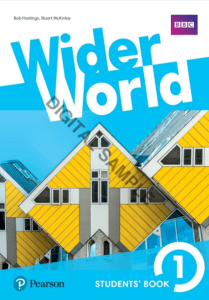
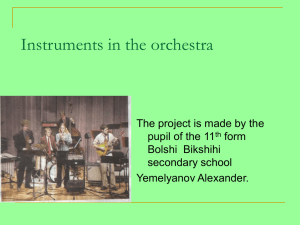

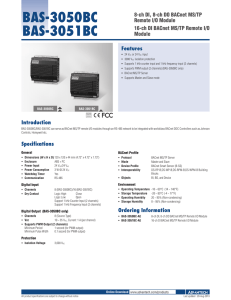
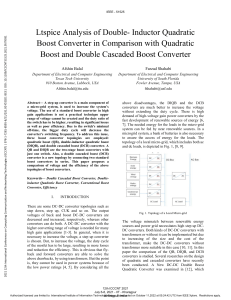
![Complete Guide to Recording Guitars at Home [Chernobyl Studios]](http://s1.studylib.ru/store/data/006572747_1-800d1f13c6beef050c5800d09541ff31-300x300.png)
![[RU] Hack Music Theory for Songwriting & Producing - Ray Harmony (2016)](http://s1.studylib.ru/store/data/006611959_1-bd4852852005d8e14a17d68e676e7fe0-300x300.png)
